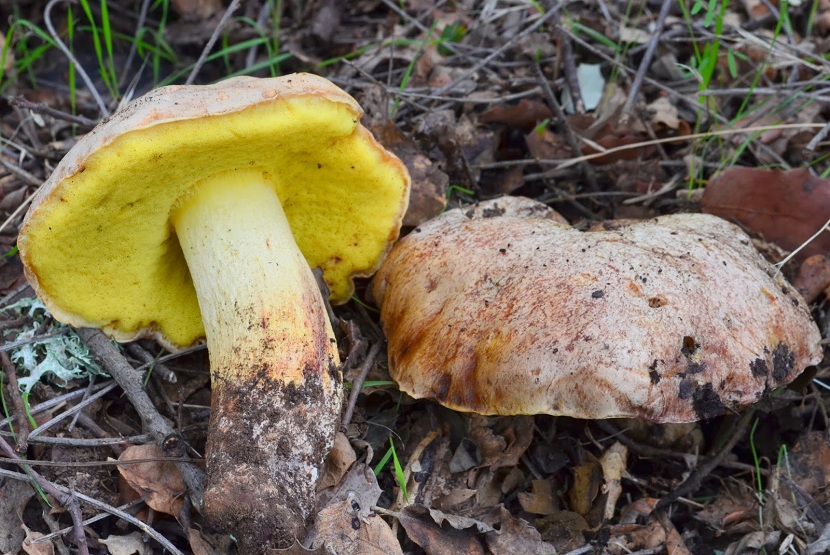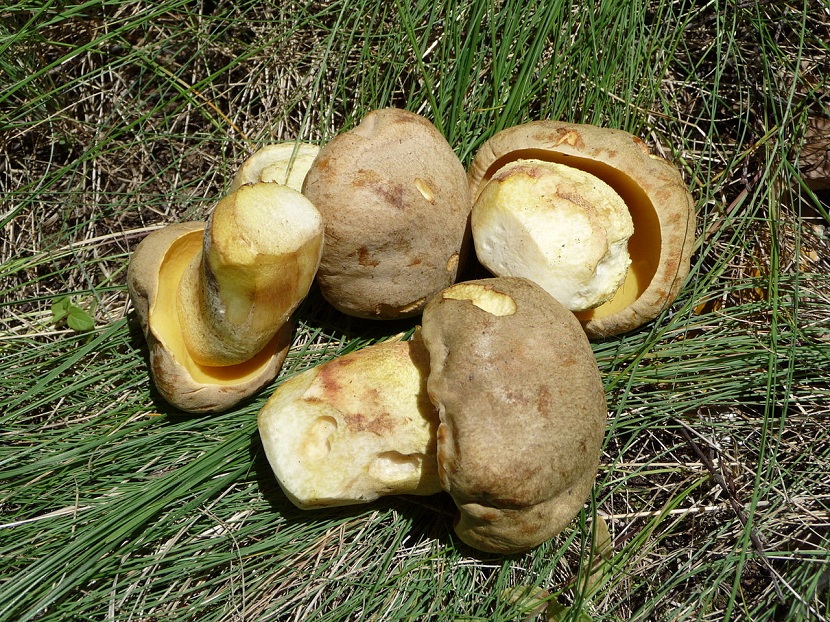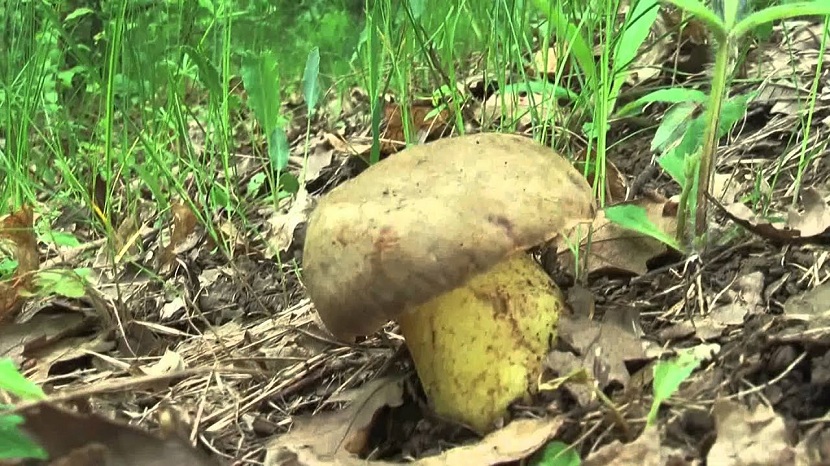
Today we are going to talk about a mushroom that belongs to the genus Boletus and that is edible. Its about Boletus impolitus. It is also known by the scientific name Hemileccinum impolitum and by the common names yellow boleto and dulzón boleto. It is a good edible discarding the part of the foot. It can lead to confusion with other types of tickets. Therefore, we are going to dedicate this entire article to describe the characteristics, edibility and ecology of this mushroom.
If you want to know more about him Impolitus Boletus, this is your post.
Key features

He has a hat whose dimensions They are between 5 and 12 centimeters in diameter, although it can greatly exceed these dimensions. There are specimens with much larger sizes. When it is young, this hat has a hemispherical shape and it will gradually plan as it develops and reaches maturity. It has some irregularities on its surface. The cuticle is attached to the meat and has a dry and stormy appearance when the specimens are young. As they develop, the cuticle is acquiring a much smoother appearance.
As for the color, depending on the conditions in which it is developing, we can see that it can vary from cream to dark brown. Its hymenium has very fine tubes only 5 to 15 mm in length and they are attached to the foot. It has been called adnatos. They are easily separable from the meat and with a lemon yellow color. Its pores are round and it deforms as they grow. These pores don't flinch when you brush or press on them.
The foot of the Impolitus Boletus it has variable shapes and different dimensions. There are not several specimens that have the exact same foot. Its color is lemon yellow at the top and, as you get closer to the base, It may have a few more reddish tones. The surface of the foot has granules in a way that may appear to resemble the feet of the Leccinum genus.
As for its meat, it has a light yellow color and is more pronounced in the area where the tubes are located. Hence, it has the common name of yellow ticket or yellowish ticket. The color of the meat does not change when it is touched or pressed or when it is cut. It gives off a slight phenol odor and has a sweet, slightly sour taste.
Ecology and area of distribution of Impolitus Boletus

This species of mushroom usually grows under some species of leafy trees such as oaks, chestnut trees, and holm oaks. In these trees we find it in a more frequent and abundant way. We can also find it, although in less quantities, under some beech trees.
It is a thermophilic species. That is, it prefers to develop and grow in environments with higher temperatures. Therefore, this species has its fruiting in late summer and early autumn. This stage of fruiting depends a lot on the altitude and latitude in which we are. With the trees that we have mentioned previously, it forms mycorrhizal associations.
It is a good edible as long as we discard at least the bottom of the foot. This is done since it has a rather unpleasant smell that can cause us not to want to consume it. It is a fairly easy species to recognize on the ground. Its main characteristic is the color of the hat that contrasts with the golden yellow of the pores. Its grainy foot and yellowish fleshand does not change color are indicative to be able to differentiate this species from others of the same genus.
We can find it in the Extremadura area in a fairly abundant way.
Collection and possible confusion of the Impolitus Boletus

When collecting this type of mushroom we must first carry out a careful examination. It is true that it is quite easy to recognize with the naked eye, but it also has some aspects that are very similar to other similar species. For example, it is quite similar to Boletus fragrans Vittadini. The main difference between these two is that the latter turns blue when cut.
It can also be confused with the pheasant, with a scientific name Leccinum lepidum, which is also a good edible and whose meat initially takes on some reddish tones. To recognize it, we must see that as they grow they turn a pinkish gray color.
If we look at it from a macroscopic way, it also has a certain or similar to Boletus appendiculatus. The difference is that this boletus has a more reticulated fold and its meat is also blue when cut. This characteristic of turning the flesh blue when cut is typical of many species of mushrooms belonging to the genus Boletus. However, there are others, such as the Impolitus Boletus which does not blue in the cut. Nor if we press or touch it in any way.
Harvesting it for consumption is not highly recommended as it is not a very frequent species. Except in places like Extremadura, it is not a species that we can find in large quantities. If we are going to make a collection of different species of edible mushrooms to make a mix, its consumption may be a good idea. Let's not forget that the fold must be discarded because of its unpleasant smell.
What is not recommended at all is to carry out a collection only of the Boletus impolitus.
Small recipe
The first thing to keep in mind is that we will not be able to make this recipe whenever we want. This is because this type of mushroom is not sold anywhere. It can only be obtained by collecting from the field and, as we have mentioned before, it is very rare.
The ingredients that we will use for this little recipe is the amount we want of the Impolitus Boletus, extra virgin olive oil and a little salt. We are going to analyze step by step what we should do:
- We clean very well with a little water and a knife to scrape all the parts of the mushrooms that have more soil.
- We get rid of the foot.
- We prepare the pan with a little oil and then we go over a low heat. When the oil is ready, we put the tickets to heat and fry them slowly.
- Then we add some salt to taste and finish poaching it.
As you can see, this species of mushroom is quite interesting as edible but very rare. I hope that with this information you can learn more about the Boletus impolitus.